


Politics
Sources
Search
Contact
Home
Election of 1876
When we think about Presidential politics we often think we live in unusual times when rankling between the parties is at an all time high. But the truth is that there is an ebb and flow to national elections and none may be as contentious as the election of 1876.
During the election New York Governor Samuel Tilden won the popular vote by a significant margin, but lacked the electoral college votes to secure the victory. There were twenty uncommitted electors from the Reconstruction States of Florida, Louisiana, and South Carolina. The balance of the election rested on their vote. With the South leaning largely Democratic the Republicans needed a compromise that would secure their votes.
An informal agreement known as ""The Compromise of 1877" gave the Democratic votes to Republican Governor Rutherford B. Hayes of Ohio. In exchange for those votes the Republicans agreed to end Reconstruction in the South.

The agreement removed the remaining Federal troops from the South Carolina, Florida, and Louisiana, and provided financial aid to help revive southern economies. So in many ways the election of 1878 was one key to opening the door to reopening the New Orleans Mint.
But there is much more to the story. Reopening the Mint was accomplished in an environment that was much different than normally discussed when just explaining the numismatic issues.
Post War Violence
After the Civil War ended political violence became endemic in Louisiana. In 1874 several white militias consolidated into paramilitary organizations such as the White League.
The White League operated openly and had political goals opposing Republican rule in the South and the suppression of black voting. White League chapters soon rose in many rural parishes, receiving financing from wealthy men.
In 1874, the White League assassinated six white Republican officeholders and a number of black witnesses in the Red River Parish. Later in 1874 the White League attempted to unseat the Republican governor of Louisiana. It brought 5,000 troops to New Orleans to engage and overwhelm forces of the Metropolitan Police and state militia to turn Republican Governor William P. Kellogg out of office and seat John McEnery.
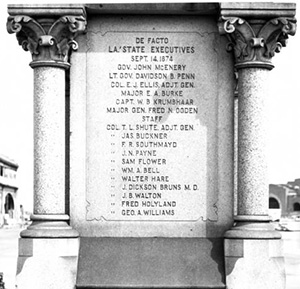
The White League took over and held the state house and city hall, but they retreated before the arrival of reinforcing Federal troops. Kellogg had asked for reinforcements before, and Grant finally responded, sending additional troops to try to quell violence throughout plantation areas of the Red River Valley, although 2,000 troops were already in the state.
Congressional Issues
The end of Reconstruction did not bury all hatchets between the North and South and many issues drug on for years. One of the most colorful was the Senatorial election of 1876 where William Linn McMillen and P. B. S. Pinchback both claimed victory and presented credentials to be seated.
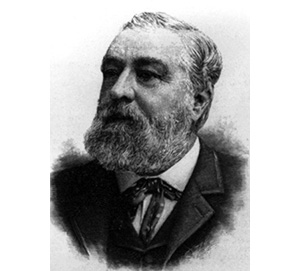
The Senate refused to seat either of them and ultimately seated James Biddle Eustis, a Democrat. Louisiana politics have always been colorful, interesting, and entertaining.
Louisiana Constitution
From 1861 through 1898 there were actually five versions of the Louisiana Constitution. These were ratified in 1861, 1864, 1868, 1879, and 1898. These were all key dates that reflect political turmoil in the State.
Constitution of 1861
In 1861 a constitutional convention was convened for the purpose of acknowledging the State's leaving the United States and becoming part of the Confederate States of America. The convention also dissolved the current government and provided for new elections.
Constitution of 1864
The constitution of 1864 is unusual because it only took effect in the 13 parishes controlled by the Union. But it also removed existing government officials and replaced them with people loyal to the Union, nicknamed "Carpetbaggers." The new constitution abolished slavery and increased rights for blacks, but did not include voting rights. Provisions in the constitution likely lit the flames of what became the riots of 1866 in which a large number of blacks and Republicans were injured or killed.
Constitution of 1868
In 1867 the U. S. Government implemented the Third Reconstruction Act. This one is important because it gave voting rights to blacks, removed property ownership as a voting requirement, bur former CSA members were still prohibited from holding office.
Constitution of 1879
The Constitution of 1879 is important because it is the first post reconstruction constitution and returned the State to sovereignty. Typical for the times the new constitution placed more voting restrictions on voting rights of freedmen. It relocated the State Capitol from New Orleans to Baton Rouge.
This era was marked by significant physical violence between democrats and republicans as a result of federally mandated changes. During this period there were actually two separate State governments. To say it was a tumultuous time would be an understatement.
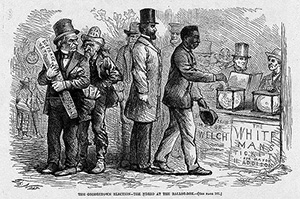
Constitution of 1898
Another constitution was ratified in 1898 and after our period of study. But it is reflective of the turmoil of the time. In Louisiana State constitutional changes had come infrequently, about every 35 years or longer. But the Civil War and Reconstruction dictated the speed of change and represented the conflicts that surrounded all that was happening in New Orleans.
Deciding to work for the U. S. Mint might not have been as easy as going down and filling out an application.
Reopening the Mint
The Mint reopened in a limited capacity in 1876 as an assay office only. Dr. M. F. Bonzano took control of all equipment and served as the assayer and superintendent of the Mint. Under Dr. Bonzano's supervision the Mint was returned to operating order by 1879 when it resumed coining operations.
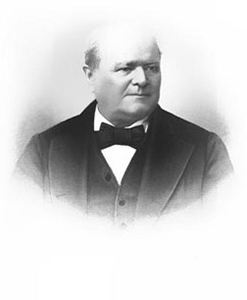
The Mint continued to be a political football for the next thirty years with conflicts over its need and purpose. Some viewed it as unnecessary with other mints in San Francisco, Denver, Carson City, and Philadelphia.
But with production needed for the Morgan Dollar the mint served a useful purpose and it seems unlikely that the Mint could have met production needs without it.
By 1881 the New Orleans Mint was employing 110 people in various capacities and the salaries of these men and women did contribute to the local economy in a meaningful way.
Upon reopening Henry Stewart Foote was named as the new superintendent. There is no evidence that Superintendent Foote was anything other than a political appointee, and his time in charge of operations was short-lived. He resigned his post in 1880 and died shortly thereafter.
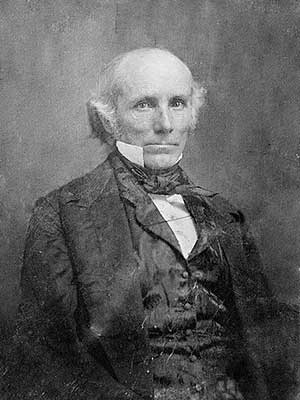
He had a very strange war experience. He was against dis-union, but at the outbreak of the War he was living in Tennessee and was elected to the First and Second Confederate Congresses. But he also defected to the North in early 1865 and ultimately traveled to Canada and England as a man without a Country. After the War he returned to the United States and lived in Washington. To be appointed to the position of Mint Superintendent there must have been some powerful pre-war political connections. During his career he served as Governor of Tennessee, a U. S. Senator, and was one of the authors of the Compromise of 1850.
The post of superintendent was then offered to an experienced coiner, melter, and refiner Dr. M. F. Bonzano. But Dr. Bonzano declined the job and instead recommended another mint employee, Martin V. Davis who lasted in the post only until 1882 and was then replaced by Dr. Andrew Woods Smythe who served until 1885. Dr. Smythe was a noted physician and surgeon, but there is no record of having any experience to manage the Mint.
So in the early 1880s the mint went through many management changes and this may have accounted, in part, for a lack of quality control.
The Aging 1D
Submissions
Clashed Denticle
Date Issues
Encyclopedia
New Orleans and the Mint in 1881
The Devolving 5
One and Done
Two and Through
Fakes
Die Fingerprints
Pricing
The Devolving 27
New Orleans and The Mint in 1881
The Civil War
Politics
The Economy
Environment
Organization
Personnel
Coinage
The Jobs
Politicians
Getting Started
Collecting The 1881-O
The 1881-O VAMs




















